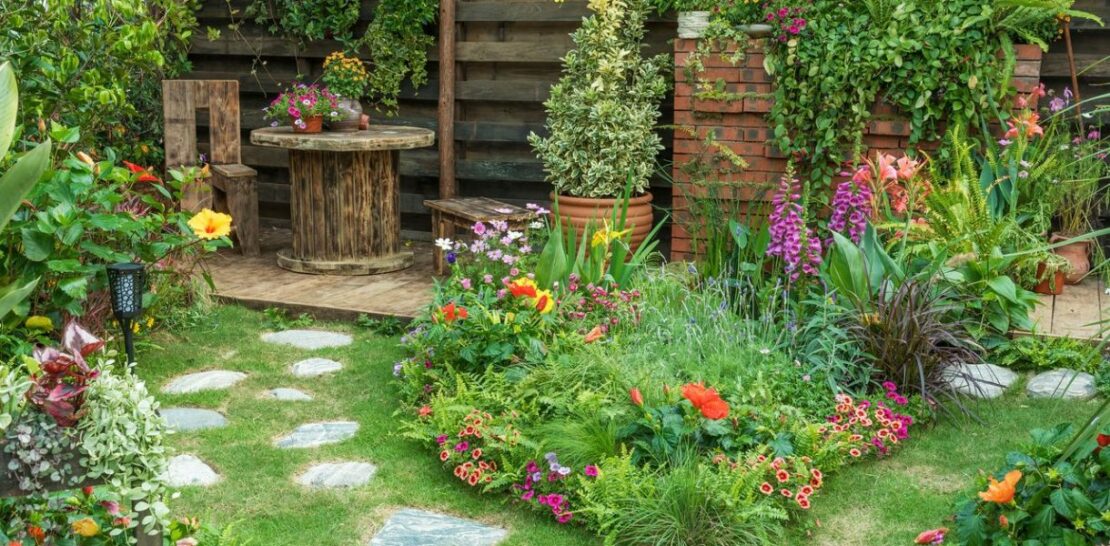As a specialist of the English language, I am delighted to delve into the enchanting world of gardening and share with you my comprehensive guide to six fabulous flowers you can plant in your garden this February to create an explosion of color and life come summer.
These flowers will not only add beauty and charm to your outdoor space, but also serve as a source of joy and inspiration for you and your loved ones.
So, without further ado, let’s explore these floral wonders, their unique characteristics, and the secrets to growing them successfully in your garden.
1. Glorious Gladiolus: A Garden Favorite for Centuries
For a timeless and elegant addition to your summer garden, the Gladiolus is an ideal choice.
Known for their striking sword-shaped leaves and tall, impressive spires of vibrantly colored blooms, Gladioli have been a garden favorite for centuries. In fact, the name “Gladiolus” derives from the Latin word “gladius,” meaning sword, which perfectly describes their appearance. These flowers come in a wide range of colors, including red, pink, purple, yellow, and even green, allowing you to create a stunning mix of hues in your garden.
When it comes to planting your Gladiolus bulbs in February, there are a few things to keep in mind:
- Soil: Gladioli prefer well-draining soil that is rich in organic matter. You can improve your soil by adding compost or aged manure before planting.
- Spacing: Plant the bulbs 4-6 inches apart and 4-6 inches deep, with the pointed end facing upwards.
- Watering: Water the bulbs well after planting, and then keep the soil consistently moist, but not soggy, throughout the growing season.
- Sunlight: These flowers love full sun, so choose a location in your garden that receives plenty of sunlight throughout the day.
2. Luscious Lilies: Unrivaled Beauty and Fragrance
For a captivating display of both color and fragrance, consider planting lilies in your garden this February.
Lilies are beloved by gardeners for their large, trumpet-shaped blooms and enchanting fragrance. There are many different types of lilies to choose from, including Asiatic, Oriental, and Trumpet hybrids, each with their own unique colors and scent profiles. Some popular choices include the ‘Stargazer’ Oriental lily, with its bold pink petals and intoxicating scent, and the ‘Golden Splendor’ Trumpet lily, which boasts bright yellow blooms and a light, citrusy fragrance.
- Prepare the planting area: Lilies prefer well-draining soil that is rich in organic matter. Remove any weeds or debris from the planting site, and work in some compost or aged manure to enrich the soil.
- Plant the bulbs: Plant the lily bulbs 8-12 inches apart and 4-6 inches deep, with the pointed end facing upwards. If you are planting more than one variety of lily, consider staggering their planting depths to create a more natural and visually interesting display.
- Water and mulch: Water the bulbs well after planting, ensuring the soil remains consistently moist but not waterlogged. Applying a layer of mulch around the planting area can help to retain moisture and suppress weeds.
- Provide support: Depending on the variety, lilies can grow quite tall, so it’s a good idea to provide some form of support, such as a stake or a garden trellis, to prevent the stems from breaking under the weight of their large blooms.
3. Dazzling Dahlias: A Versatile Showstopper
If you’re looking for a showstopper in your summer garden, the dahlia will not disappoint.
Dahlias are known for their wide variety of shapes, sizes, and colors, ranging from small, daisy-like blooms to large, dinner plate-sized flowers with intricate petal formations. Their versatility makes them a popular choice for both formal and informal gardens, with options to suit almost any style or color scheme. Some popular types of dahlias include the ‘Bishop of Llandaff’, withits striking dark foliage and vibrant red flowers, and the ‘Café au Lait’, which boasts large, creamy blooms that make a stunning addition to any garden.
When planting dahlias in February, it is essential to give them the right conditions to thrive:
- Soil: Dahlias prefer well-draining soil that is rich in organic matter. Amend your soil with compost or aged manure to provide the nutrients these flowers need to grow.
- Planting depth: Plant dahlia tubers 4-6 inches deep, with the eye (the growing point) facing upwards. The depth may vary depending on the size of the tuber and the specific variety, so consult the planting instructions provided with your tubers for the best results.
- Spacing: Space dahlia tubers 12-24 inches apart, depending on the variety and the size of the mature plant. Smaller varieties can be planted closer together, while larger varieties will need more space to grow.
- Sunlight: Dahlias love full sun, so choose a location in your garden that receives at least six hours of sunlight per day.
In addition to these planting tips, it’s important to remember that dahlias are not frost-tolerant. If you live in an area where the ground is still frozen in February, consider starting your dahlia tubers indoors in pots and transplanting them outside once the soil has warmed and the risk of frost has passed.
4. Brilliant Begonias: A Burst of Color for Shady Spaces
For gardeners with limited sun exposure, begonias offer a beautiful and colorful solution for brightening up shady spaces.
Begonias are known for their stunning foliage, which can range from deep green to rich burgundy, as well as their delicate, waxy flowers that come in shades of red, pink, orange, and white. These versatile plants can be grown in containers, hanging baskets, or directly in the ground, making them an excellent choice for adding color and texture to a variety of garden spaces.
Planting begonias in February requires a slightly different approach than the other flowers discussed so far:
- Start indoors: Begonias are generally grown from tubers, which should be started indoors in February and transplanted outside once the risk of frost has passed. Place the tubers in a shallow tray of moist peat moss or vermiculite, with the hollow side facing up, and cover them lightly with more of the planting medium. Keep the tray in a warm, bright location, and maintain consistent moisture until the tubers begin to sprout.
- Transplanting: Once the begonia tubers have sprouted and all danger of frost has passed, carefully transplant them to their final location in the garden, whether that be a container, hanging basket, or directly into the ground.
- Soil and light requirements: Begonias thrive in well-draining soil that is rich in organic matter, and they prefer partial shade to full shade. Be sure to choose a location in your garden that meets these requirements for the best results.
5. Captivating Crocosmia: A Fiery Addition to Your Garden
For a touch of drama and a fiery burst of color, consider planting crocosmia in your February garden preparations.
Crocosmia, also known as Montbretia, is a perennial flower that features tall, arching stems adorned with clusters of tubular blooms in shades of red, orange, and yellow. The flowers resemble small, fiery flames, creating an eye-catching display that is sure to turn heads. In addition to their vibrant colors, crocosmia flowers also attract hummingbirds and butterflies, making them an excellent choice for gardeners looking to support local wildlife.
To plant crocosmia corms in February, follow these simple steps:
- Choose a location: Crocosmia thrives in full sun to partial shade and requires well-draining soil. Select a location in your garden that meets these requirements.
- Prepare the soil: Work compost or aged manure into the planting area to improve soil fertility and drainage.
- Plant the corms: Plant crocosmia corms 3-5 inches deep and 6-8 inches apart, with the pointed end facing up. If planting multiple rows, space the rows 12-18 inches apart to allow for adequate air circulation and growth.
- Water and care: Water the corms well after planting, and maintain consistent moisture throughout the growing season. Apply a layer of mulch around the planting area to help retain moisture and suppress weeds.
6. Enchanting Echinacea: A Hardy Perennial with Healing Properties
For a resilient and low-maintenance flower that also boasts medicinal qualities, echinacea is the perfect choice for your February planting endeavors.
Echinacea, commonly known as coneflower, is a perennial flower native to North America. It is characterized by its large, daisy-like blooms with raised central cones and drooping petals, which come in a variety of colors, including pink, purple, white, and yellow. Echinacea is not only a beautiful addition to any garden, but it is also valued for its immune-boosting and anti-inflammatory properties, which have been used in herbal medicine for centuries.
Here are some tips for planting echinacea seeds in February:
- Start indoors: To get a head start on the growing season, sow echinacea seeds indoors in February. Fill a seed tray or small pots with a well-draining seed-starting mix, and sow the seeds at a depth of about 1/4 inch. Keep the soil consistently moist and maintain a temperature of around 65-70°F (18-21°C) to encourage germination.
- Transplanting: Once the echinacea seedlings have developed their first set of true leaves and the risk of frost has passed, they can be transplanted outdoors. Harden off the seedlings by gradually exposing them to outdoor conditions for a week or two before transplanting them to their final location in the garden.
- Soil and light requirements: Echinacea prefers well-draining soil that is rich in organic matter and a location with full sun to partial shade. Amend your soil with compost or aged manure to improve fertility and drainage, and choose a suitable location in your garden that meets these requirements.
- Water and care: Water the transplanted echinacea seedlings well, and maintain consistent moisture throughout the growing season. Echinacea is relatively drought-tolerant, so be careful not to overwater, as this can lead to root rot. Apply a layer of mulch around the planting area to help retain moisture and suppress weeds.
In conclusion, planting these six spectacular flowers in your garden this February will not only provide you with a vibrant and colorful display come summer but also offer various benefits such as attracting pollinators, providing fragrance, and even offering medicinal properties. By following the planting and care tips detailed above, you will be well on your way to creating a stunning summer garden that will bring joy and inspiration to you and your loved ones for months to come. So, gather your seeds, bulbs, and tubers, and embark on a delightful gardening journey that will reap bountiful rewards in the form of a breathtakingly beautiful outdoor space.




